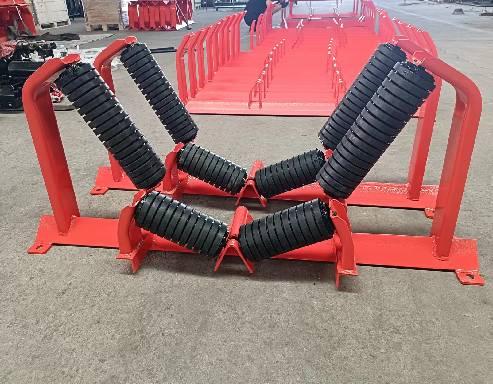 Afrikaans
Afrikaans  Albanian
Albanian  Amharic
Amharic  Arabic
Arabic  Armenian
Armenian  Azerbaijani
Azerbaijani  Basque
Basque  Belarusian
Belarusian  Bengali
Bengali  Bosnian
Bosnian  Bulgarian
Bulgarian  Catalan
Catalan  Cebuano
Cebuano  Corsican
Corsican  Croatian
Croatian  Czech
Czech  Danish
Danish  Dutch
Dutch  English
English  Esperanto
Esperanto  Estonian
Estonian  Finnish
Finnish  French
French  Frisian
Frisian  Galician
Galician  Georgian
Georgian  German
German  Greek
Greek  Gujarati
Gujarati  Haitian Creole
Haitian Creole  hausa
hausa  hawaiian
hawaiian  Hebrew
Hebrew  Hindi
Hindi  Miao
Miao  Hungarian
Hungarian  Icelandic
Icelandic  igbo
igbo  Indonesian
Indonesian  irish
irish  Italian
Italian  Japanese
Japanese  Javanese
Javanese  Kannada
Kannada  kazakh
kazakh  Khmer
Khmer  Rwandese
Rwandese  Korean
Korean  Kurdish
Kurdish  Kyrgyz
Kyrgyz  Lao
Lao  Latin
Latin  Latvian
Latvian  Lithuanian
Lithuanian  Luxembourgish
Luxembourgish  Macedonian
Macedonian  Malgashi
Malgashi  Malay
Malay  Malayalam
Malayalam  Maltese
Maltese  Maori
Maori  Marathi
Marathi  Mongolian
Mongolian  Myanmar
Myanmar  Nepali
Nepali  Norwegian
Norwegian  Norwegian
Norwegian  Occitan
Occitan  Pashto
Pashto  Persian
Persian  Polish
Polish  Portuguese
Portuguese  Punjabi
Punjabi  Romanian
Romanian  Russian
Russian  Samoan
Samoan  Scottish Gaelic
Scottish Gaelic  Serbian
Serbian  Sesotho
Sesotho  Shona
Shona  Sindhi
Sindhi  Sinhala
Sinhala  Slovak
Slovak  Slovenian
Slovenian  Somali
Somali  Spanish
Spanish  Sundanese
Sundanese  Swahili
Swahili  Swedish
Swedish  Tagalog
Tagalog  Tajik
Tajik  Tamil
Tamil  Tatar
Tatar  Telugu
Telugu  Thai
Thai  Turkish
Turkish  Turkmen
Turkmen  Ukrainian
Ukrainian  Urdu
Urdu  Uighur
Uighur  Uzbek
Uzbek  Vietnamese
Vietnamese  Welsh
Welsh  Bantu
Bantu  Yiddish
Yiddish  Yoruba
Yoruba  Zulu
Zulu Understanding the Functionality and Importance of Conveyor Belt Pulleys in Material Handling Systems
Understanding Conveyor Belt Pulleys Essential Components in Material Handling Systems
In the realm of material handling systems, conveyor belts play a pivotal role in moving goods efficiently across various industries. Among the essential components of these systems are conveyor belt pulleys. Understanding the design, function, and importance of pulleys can greatly enhance the effectiveness and longevity of conveyor systems.
What is a Conveyor Belt Pulley?
A conveyor belt pulley is a cylindrical device that serves as a key element in the operation of a conveyor belt. Typically made from materials like steel or aluminum, pulleys are critical for driving the belt and supporting the load being transported. They can be located at various points along a conveyor system, including at the start (head pulley), the end (tail pulley), and at intervals along the conveyor line (snub pulleys, return pulleys).
Types of Conveyor Belt Pulleys
There are several types of conveyor belt pulleys, each designed to meet specific operational needs. The most common types include
1. Head Pulley Located at the discharge end of the conveyor, the head pulley is essential for driving the belt forward. It is often designed with grooves to increase friction and prevent slippage.
2. Tail Pulley Positioned at the loading end, this pulley helps to return the belt back to the start point. It typically supports a lighter load and is crucial in maintaining tension in the system.
4. Return Pulley Found along the underside of the conveyor, return pulleys assist in guiding the belt back to the head pulley.
conveyor belt pulley

Each of these pulleys works in conjunction to ensure the seamless operation of the conveyor belt system.
The Role of Pulleys in Conveyor Systems
Pulleys serve multiple functions in conveyor systems. Firstly, they provide the necessary traction needed to move the belt. The friction between the pulley surface and the belt is critical; if this friction is insufficient, the belt can slip, causing operational inefficiencies and potential equipment damage.
Secondly, pulleys help to maintain the tension of the conveyor belt. Proper tension is essential for the effective functioning of the system, as it prevents the belt from sagging or misalignment, which can lead to wear and tear or even system failure.
Thirdly, pulleys facilitate the directional changes in a conveyor system. This is particularly important in facilities where space is limited, necessitating the need for loading and unloading points at different locations.
Maintenance of Conveyor Belt Pulleys
Maintaining conveyor belt pulleys is crucial for the longevity of the entire conveyor system. Regular inspections should be conducted to check for wear and tear, misalignment, and proper lubrication. It's important to ensure that pulleys are free from debris and buildup, which can impede their function.
Lubrication of bearings is another critical maintenance task, as it reduces friction and wear. Operators should also ensure that the pulleys are correctly tensioned to prevent unnecessary strain on the belt and associated components.
Conclusion
In conclusion, conveyor belt pulleys are vital components that contribute significantly to the efficiency and reliability of material handling systems. Understanding their types, functions, and maintenance requirements is crucial for anyone involved in the design, operation, or upkeep of conveyor systems. By ensuring that pulleys function optimally, businesses can enhance productivity and reduce downtime, ultimately leading to more efficient operations and better bottom lines.
-
Revolutionizing Conveyor Reliability with Advanced Rubber Lagging PulleysNewsJul.22,2025
-
Powering Precision and Durability with Expert Manufacturers of Conveyor ComponentsNewsJul.22,2025
-
Optimizing Conveyor Systems with Advanced Conveyor AccessoriesNewsJul.22,2025
-
Maximize Conveyor Efficiency with Quality Conveyor Idler PulleysNewsJul.22,2025
-
Future-Proof Your Conveyor System with High-Performance Polyurethane RollerNewsJul.22,2025
-
Driving Efficiency Forward with Quality Idlers and RollersNewsJul.22,2025





























